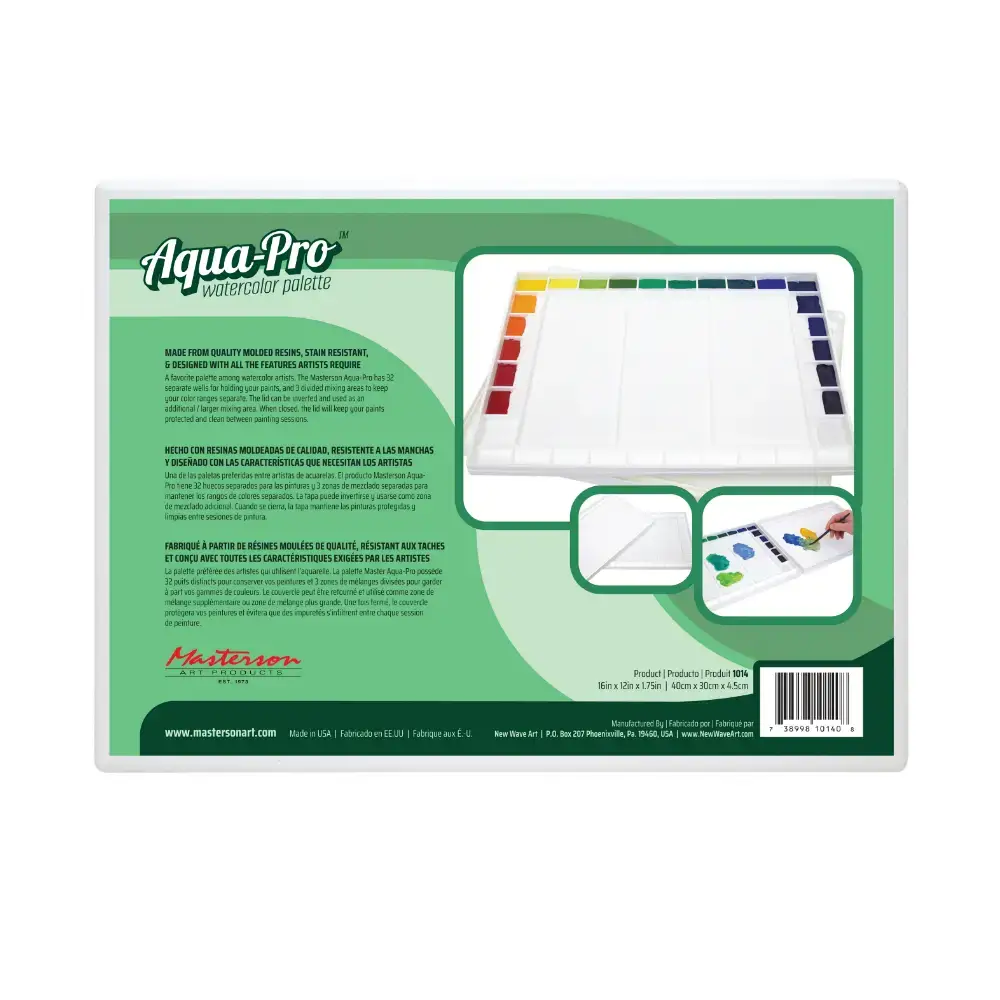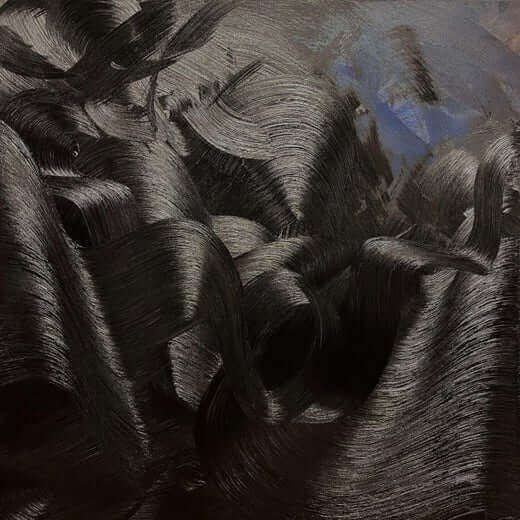Many artists begin painting, or paint for years already, with an extensive palette of 12 different paints. Though it may sound like the right thing to do, and it may be what the starter set gave you, but 12 colours can be overwhelming and make colour mixing confusing, resulting in a grey-brown, flat & dull painting. The truth is that more is always less, especially in painting. We're here to give you a guide to what limited palettes are, and three useful limited palettes to try out to improve your colour theory. Read on for more!
Overview
- What is a limited palette?
- What are primary colours?
- Why use a limited palette?
- CMYK
- RYB
- Zorn
- Monochromatic
What is a limited palette?
A limited palette is where artists strategically choose the smallest range of colours possible for a painting. What kind of limited palette you choose will depend a lot on what your aims are for the piece as there are countless variations that serve different purposes. Exploring a limited palette helps you reach a deeper understanding of the properties of the pigments that you are using, seeing just how far you can push a single colour and utilise important techniques in colour theory. The knowledge you gain from spending time with a limited palette is unattainable elsewhere. Building your understanding of colour slowly and only adding more deliberately over a long time of play, in this artist’s opinion, is the most productive and least intimidating way to explore colour.
What are Primary colours?
In the 17th century Sir Isaac Newton, through observing light splitting through prisms and recording what he found, created the colour wheel. Now, the value of the colour wheel is its ability to help artists and designers create appealing palettes through the underlying theory that this wheel demonstrates.
A colour wheel has twelve sections, each one filled with a colour. There are three primary colours, three secondary colours and six tertiary colours. The Primary colours are Red, Yellow, and Blue and from these, is it possible to make every other colour that is present on the wheel. The Secondary colours are formed through mixing two primary colours together. These colours are Purple (red + blue), Green (yellow + blue), and Orange (yellow + red). Tertiary colours are what is left in between.
Why use a limited palette?
Using a limited palette gives you an opportunity to engage in creative problem solving. Working with limitations and succeeding will make you a more creative and adaptive painter. Which is important. A limited palette, especially as a beginner, will exponentially grow your understanding of colour theory through practice. Nothing in a book or a YouTube video will ever beat your own practical trial and error. This will also help beginners learn to use value and tone rather than colour to emphasise form, which is very important in representational painting. It is advantageous to have a solid understanding of this before moving onto more complex colour. Reducing your palette also forces you to consider mood and emotion, i.e., you may not be able to paint things exactly in the colour you think you see, instead having to opt for colour which best represents affect or narrative. A reduced palette, specifically a two - four colour palette, gives you greater colour harmony and control. Unifying colours and removing the disjointed look present with larger palettes provides subtler colour changes and more control of the outcome. Yet the biggest selling point for using a limited palette is economy of paint, particularly in cost. When you begin experimenting with reduced palettes, you’ll find that you’re buying less paint as time goes on, even if you do change palettes often.
Examples of limited palettes
CMYK
Cyan, Magenta, Yellow and Key (black) are the four colours that make up the CMYK palette. This palette has been used predominantly in printing, especially inkjet printing. CMYK are considered the ‘true’ primary colours by many artists as it has the widest gamut of colour creations with the least amount of pigment - exactly why it is so popular in printing. CMYK produces better, brighter, cleaner colours than the RYB palette.
A lot of artists can have difficulties with CMYK and have expressed concerns with its properties. The biggest issue experienced with this palette is the transparency of these pigments. This can be difficult to accommodate when you’ve been painting with specifically opaque primary colours prior. Another concern with CMYK is lightfastness. In the past, the pigments used for CMYK have shown poor lightfastness - we have all seen this ourselves with printed images fading away when left for a year or so. However, modern pigments used for CMYK have been constantly evolving and now include high lightfast ratings.
For painters, the best colours to start CMYK with would be Phthalo blue, Quinacridone Red or Magenta, Lemon Yellow, and Lamp Black. Some artists seek a lighter blue with less tinting strength than Phthalo Blue, opting for Cobalt Teal instead. Personally, I find the mixes that you get from Cobalt Teal are nearly identical to the mixes you get from Phthalo, and Phthalo is considerably more affordable than Cobalt Teal. The biggest issue that I have found myself with the CMYK palette is that it makes yellow and warm orange weak and can be quite a challenge to mix. Green and purple are still vibrant and have a lot of punch to them, however. To counteract lacklustre yellow mixes, I have supplemented Lemon Yellow with Cadmium Lemon, which has given better opacity and brilliance for the yellow or orange mixes.
RYB
The most widely accepted and universally taught limited palette is the Red, Yellow, Blue (RYB) primary palette. Impressionists pioneered this palette, as they liked to paint plein air (painting outside) and only wished to take minimal paint with them. These artists deeply enjoyed not only the introduction of cadmium pigments, but the invention of the paint tube. The paint tube, as opposed to earlier vessels, allowed much more freedom and ease of transporting paint and a pivotal influence on the way the Impressionists worked. It’s also important to note just how influential the Impressionists were in the western canon of art history and how deeply their attitudes, palettes, and practices have overtaken most other painting knowledge in the current painting zeitgeist.
In terms of RYB as a palette, Ultramarine Blue and Cadmium Yellow will be the most useful blue and yellow to have as primary colours. Red is a little trickier. Choosing the right red can be problematic in a red, yellow, blue palette. Convention would recommend a colour like Cadmium Red, but this pigment makes it extremely difficult to achieve brilliant purples. In fact, it’s the most cited issue that people have with the RYB palette, is that their colours start to look muddy when they start really trying to mix them. This has a lot to do with the opacity and chroma of the standardly chosen colours.
Zorn
The Zorn Palette is named after the Swedish portrait painter Anders Zorn. The palette itself is very simple and incredibly effective and still commonly used. The palette is also known as the Apelles Palette, used by 4th century BC Greek artist Apelles of Kos. This palette consists of four colours, Ivory Black, Vermillion, Yellow Ochre and Titanium White. Nowadays vermillion is an expensive pigment and usually replaced by Cadmium or Pyrrole Red.
Some artists are initially concerned with lack of a blue pigment in the Zorn palette. However, the idea is to create very subdued blues from mixing white into your ivory black. The Zorn palette can create a large range of colours and values that you wouldn’t expect from such limitations. Colour saturation with this palette is low and you’ll mostly be working with muted mixes, which is perfectly suited for portraits and figures. When testing out this palette, it’s best to create a colour chart to see just how far it can go.
The Zorn palette unfortunately cannot create a green, a purple or a blue so it is less ideal for landscape painters – it’s predominately geared for portrait painting.
Monochromatic
A monochromatic palette is where a single colour along with white and black is used. This kind of palette helps an artist better understand how to use value to show form rather than colour. You can also use two different pigments of the same colour range and still have a painting be described as monochromatic. For example, you could use both Ultramarine Blue and Phthalo Blue in one painting and this would still be considered monochromatic.
Many artists are introduced to a monochromatic palette when learning how to use tone and value to paint basic forms. Most artists will use a monochromatic palette as an underpainting as it helps them establish overall tone throughout the piece, yet other artists use monochromatic painting as the final work.
Your one-stop shop for art supplies
And there you have it, a guide to limited palettes! At Art to Art, we have a wide selection of art supplies to choose from, including oil paints, varnish brushes, colour pencil sets and so much more! Upgrade your collection today and experience the quality! Free shipping on orders over $100. Same day, Dispatch Australia-wide. Before you go, don’t forget to check out our collection of markers, paint pens and drawing accessories.






